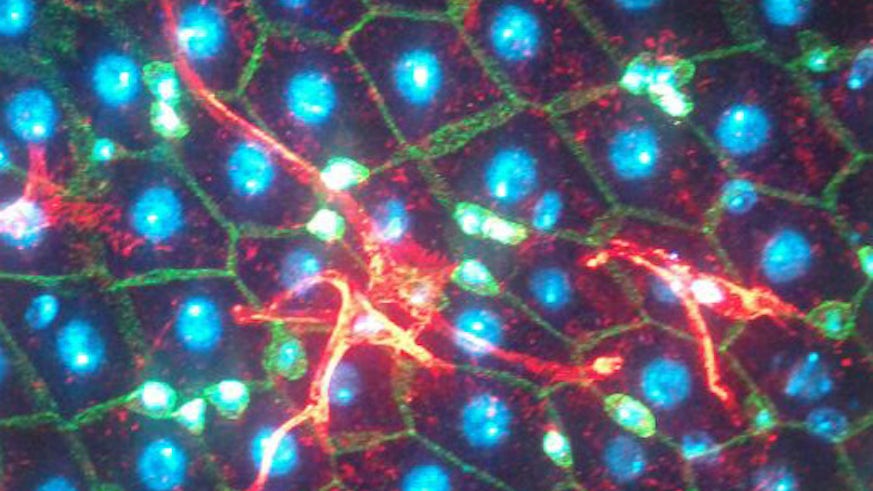Predicting stem cell behaviour
16 Chwefror 2017

New research which combines experiments with mathematical modelling, can help predict the behaviour of stem cells. This is the finding of a study published online in Development on 7 February 2017.
Stem cells play a key role in repairing tissues in the body. As well as renewing themselves, they are also tasked with producing new mature cells to substitute the ones that are lost by wear and tear (a process known as differentiation). In order for the body to remain healthy, these two functions need to be carefully balanced.
To do this, stem cells rely on sensing the regulatory bio-molecules that are produced in their surroundings. If the bio-molecule signals are not produced, or communicated ineffectively, this may result in the decay of the tissue or the unnecessary amplification of stem cells. This in turn may lead to the expansion of pre-cancerous mutations.
Dr Joaquín de Navascués from the European Cancer Stem Cell Research Institute, along with interdisciplinary collaborators from Universitat Pompeu Fabra in Barcelona, set out to explore whether stem cell behaviour could also be influenced by the physical arrangement of the cell membrane, which acts as communication channel.
Using the Notch signalling pathway as a model, the team developed a dynamical system model to predict how stem cells will react depending on the size and arrangement of their communication channel. The results suggest that the strength of signal getting through to stem cells depends on the extent of membrane contact between cells.
If there is only a small amount of contact the signal tends to be fairly weak, whereas a greater level of contact results in a stronger signal. A weaker signalling channel may stop cells from differentiating at all, whilst a signalling channel that’s too strong could result in too much differentiation taking place.
Dr Navascués, lead author of the study, explained the findings.
“Our research highlights that the geometry of cells can have an impact on stem cell behaviour. Aside from biomolecular signals, we now know that physical arrangement of cells is also an important factor in maintaining the right proportion of stem cells and therefore the health of the tissue.”
He continued
“While our mathematical model proved this concept in theory, further tests on tissue have demonstrated that it’s also plausible in reality. It would be interesting in the future to try to experimentally manipulate the arrangement of cells in the tissue independently of the signalling systems, to see if that alone can influence the behaviour of stem cells – this is however remarkably difficult in practice.”
An early version of the manuscript is freely available in bioRxiv.